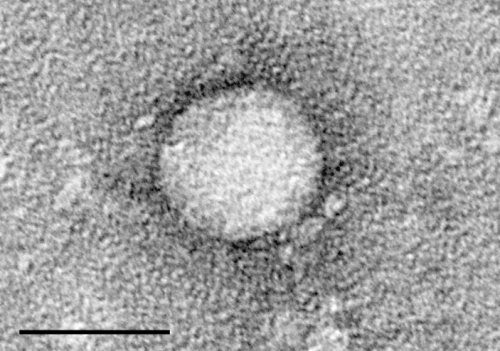More cost-effective cure for hepatitis C may be close

The cost of treating hepatitis C virus (HCV) could be cut up to 50 percent if mathematical models are used to predict when patients can safely stop taking direct-acting antiviral (DAA) medication, according to a new study by researchers at Loyola University Health System and Loyola University Chicago.
An estimated 170 million people have the blood-borne infection worldwide, which is a major cause of chronic liver disease. The recent approval of DAAs has led to a revolution in the treatment of HCV, but the high cost of DAAs limits access to treatment in America and abroad.
"Recent clinical trials of DAAs against HCV suggest that cure of the infection often took place before the end of treatment," said Harel Dahari, PhD, assistant professor at Loyola University Chicago Stritch School of Medicine.
"Treatment currently is standardized to be given for a set period of time, not tailored to the patient," said Scott Cotler, MD, FCO, hepatology division director for Loyola and Stritch professor. "In many cases, this may result in the prolonged use of expensive drugs with essentially no additional positive effect."
Using more frequent blood testing to determine HCV levels, Loyola researchers were able to identify when a cure was reached and predict when therapy could be discontinued. This modeling could allow for individualized treatment to achieve optimal results while reducing drug duration and cost.
"This is the first time this approach has been tested in hepatitis C patients undergoing DAA treatment," Dr. Dahari said. "This initial study is very encouraging."
The lead authors, Drs. Dahari, Laetitia Canini, PhD, Susan L. Uprichard, PhD, and colleagues examined the test results of 58 chronic-HCV patients being treated with the widely used DAA drug sofosbuvir, combined with daclatasvir, simeprevir or ledipasvir, in three French referral centers. HCV was measured before treatment (called baseline), at day two, every other week, end of treatment and then 12 weeks after end of treatment. Mathematical modeling was used to predict the duration of treatment need to achieve a cure.
"The use of early viral-kinetic analysis has the potential to individualize duration of DAA therapy with a projected cost savings of 16 to 20 percent per 100 treated persons and up to 50 percent in about 40 percent of patients," Dr. Dahari and colleagues wrote. "Shorter regimens with low pill burdens, and few adverse effects, could improve patient adherence in difficult to treat populations."
The study, published in the Journal of Hepatology, is titled "HCV kinetic and modeling analyses indicate similar time to cure among sofosbuvir combination regimens with declatasvir, simeprevir or ledipasvir."

















